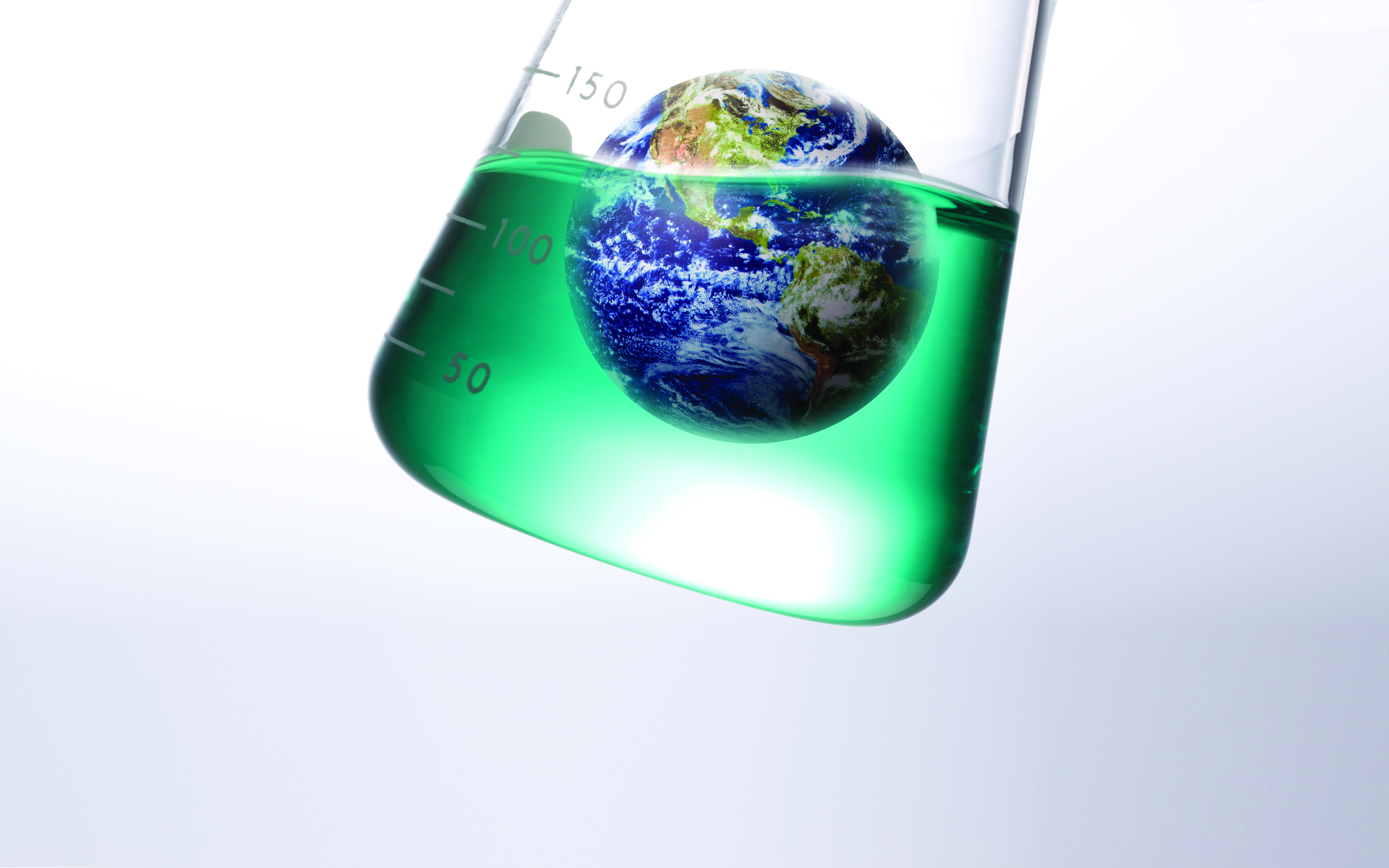by Brandy Abalos
We live in a world of convenience, surrounded by products designed to make our lives easier. But beneath the glossy surfaces and enticing labels, a hidden danger lurks: toxic chemicals.
From the food we eat to the cosmetics we apply and the household cleaners we use, we’re constantly exposed to a cocktail of substances that can silently undermine our health. There is an unsettling reality of toxic exposure in everyday products. It’s important to know about the specific culprits found in food, cosmetics and household items, and also examine their potential impact on our well-being, from subtle disruptions to severe chronic illnesses.
There is a growing wave of legal actions being taken against manufacturers and distributors, as consumers and regulatory bodies demand greater transparency and accountability. This article will uncover the hidden toxins in our daily lives and explore the fight for a safer, healthier future.
Unmasking Harmful Chemicals in Our Everyday Products
In our modern world, convenience often comes at a hidden cost. We surround ourselves with products designed to simplify our lives, from the food we consume to the cosmetics we apply and the cleaners we use to maintain our homes. Yet, a growing body of scientific evidence reveals a disturbing truth: many of these everyday items contain harmful chemicals that can silently erode our health.
The Palate of Peril: Toxic Chemicals in Our Food
Our relationship with food is fundamental to our well-being, but the modern food industry has introduced a complex web of additives, pesticides and processing methods that can introduce harmful substances into our diets.
Pesticides Used on Crops Remain in Our Food
While designed to protect crops, pesticides like organophosphates and neonicotinoids can linger on produce and enter our bodies. These chemicals have been linked to neurological disorders, developmental problems and even certain cancers. For example, the widespread use of glyphosate, a common herbicide, has also raised concerns due to its potential carcinogenic effects.
Food Additives Can Impact Adults and Children
Processed foods often contain a cocktail of artificial colors, flavors and preservatives. While some are deemed “generally recognized as safe” (GRAS), others have been linked to adverse health effects. For instance, artificial sweeteners like aspartame have been associated with migraines, headaches and neurological issues. Certain food dyes, such as Red Dye No. 40, have been linked to hyperactivity in children.
Heavy Metals Contaminate Some Foods
Contamination of food with heavy metals like mercury, lead and cadmium is a serious concern. Mercury accumulation in seafood, particularly predatory fish, can lead to neurological damage. Lead contamination can affect cognitive development in children, and cadmium exposure has been linked to kidney damage and bone problems.
PFAS (Per- and Polyfluoroalkyl Substances) Accumulate in the Body
These “forever chemicals” are used in food packaging, non-stick cookware and even some food processing equipment. They are extremely persistent in the environment and accumulate in the human body. PFAS exposure has been linked to a range of health problems, including thyroid disruption, liver damage and certain cancers.
Phthalates and Bisphenols Pose Serious Health Concerns
These chemicals, often used in food packaging and plastic containers, can leach into food and beverages. They are known endocrine disruptors, meaning they can interfere with the body’s hormonal system. Bisphenol A (BPA) has been linked to reproductive problems, cardiovascular disease and developmental issues. Phthalates have been associated with similar health concerns.
Accumulated Toxins from Food Result in a Complex Health Burden
The cumulative effect of these food-borne toxins can manifest in a variety of health problems, ranging from digestive issues and allergies to chronic diseases and developmental disorders. Furthermore, the synergistic effects of multiple chemical exposures can create complex health challenges that are difficult to diagnose and treat.
Beauty’s Hidden Burden: Toxic Chemicals in Cosmetics
The pursuit of beauty should not come at the expense of our health. Unfortunately, many cosmetic and personal care products contain a disturbing array of potentially harmful chemicals.
Parabens Are Endocrine Disruptors
These preservatives are widely used in cosmetics to prevent bacterial growth. However, parabens are endocrine disruptors and have been linked to breast cancer. Their ability to mimic estrogen can disrupt hormonal balance, potentially contributing to the development of other hormone-related cancers and reproductive disorders. The long-term, cumulative exposure to parabens from multiple cosmetic products raises concerns about their overall impact on human health.
Phthalates Can Penetrate Skin
Phthalates are also found in cosmetics, particularly fragrances and nail polish. These chemicals can readily penetrate the skin, making topical application a significant route of exposure. They can disrupt hormone function and have been linked to reproductive problems and developmental issues.
Formaldehyde-Releasing Preservatives
These chemicals, such as DMDM hydantoin and diazolidinyl urea, release formaldehyde, a known carcinogen. The gradual release of formaldehyde from these preservatives means that even low-level repeated exposures can pose a significant health risk. They are often found in shampoos, conditioners and other personal care products.
Triclosan Can Accumulate in the Environment
This antibacterial agent was once common in soaps and toothpaste but has been linked to endocrine disruption and antibiotic resistance. Its widespread use contributed to the proliferation of resistant bacteria, diminishing the effectiveness of antibiotics. Concerns over its potential to bioaccumulate in the environment and disrupt aquatic ecosystems further fueled its decline in consumer products.
Lead and Other Heavy Metals
Traces of heavy metals like lead, arsenic and mercury can be found in some cosmetics, particularly lipsticks and eye shadows. These metals can accumulate in the body and lead to neurological damage and other health problems. Children and pregnant women are particularly vulnerable to the detrimental effects of heavy metal exposure due to their developing systems.
PFAS Have Many Detrimental Health Effects
PFAS are also found in some makeup and other water-resistant products. Their persistence in the environment and human body means that even low levels of exposure can contribute to long-term health risks. The ability of PFAS to migrate from products to the skin and bloodstream raises particular concerns about their potential to disrupt hormonal systems and immune function.
Fragrance Can Contain Unexpected Toxins
While fragrance is often marketed as a desirable feature, it can be a source of numerous undisclosed chemicals, including endocrine disruptors and allergens. Manufacturers are not required to disclose the specific ingredients used in fragrance, making it difficult for consumers to avoid potential toxins.
Beauty Product Toxin Absorption Results in Systemic Effects
The skin, our largest organ, readily absorbs these chemicals that are in beauty products, allowing them to enter the bloodstream and potentially disrupt various bodily functions. Long-term exposure to these toxins can lead to skin irritation, allergies, hormonal imbalances and even cancer.
The Home’s Hidden Hazards: Toxic Chemicals in Household Products
Our homes, intended to be safe havens, can also harbor a surprising number of harmful chemicals. This infiltration often occurs through seemingly innocuous products, from the furniture we sit on to the air we breathe. Understanding the sources of these chemicals is important for creating a truly safe and healthy living environment.
Cleaning Products Contain Harsh Chemicals
Many conventional cleaning products contain harsh chemicals like ammonia, bleach and volatile organic compounds (VOCs). These chemicals can irritate the eyes, skin and respiratory system. Long-term exposure to VOCs has been linked to respiratory problems, headaches and even cancer.
Flame Retardants Do More Than Reduce Flammability
These chemicals are added to furniture, carpets and electronics to reduce flammability. However, they can leach out of these products and accumulate in dust and air. Flame retardants have been linked to endocrine disruption, developmental problems and cancer.
PFAS Contaminates Indoor Environments
Used in non-stick cookware, stain-resistant fabrics and some cleaning products, PFAS can contaminate indoor air and dust. The microscopic particles of PFAS released from these products can readily settle onto surfaces and become airborne, leading to inhalation and ingestion.
Formaldehyde Causes Problems for Extended Periods of Time
This chemical is found in building materials, furniture and pressed wood products. Formaldehyde is a known carcinogen and can cause respiratory problems and eye irritation. The off-gassing of formaldehyde from these products can continue for extended periods, particularly in poorly ventilated spaces.
Pesticides Are Often Overused in Homes
Indoor pesticides, such as those used for pest control, can expose residents to harmful chemicals. Improper applications or overuse of these pesticides can significantly amplify the risk of exposure, especially for vulnerable populations. These chemicals can linger in the air and on surfaces, leading to chronic exposure.
Air Fresheners Release Volatile Compounds
Many air fresheners contain VOCs and other potentially harmful chemicals. The artificial fragrances employed in these products often mask, rather than eliminate underlying odors, while simultaneously releasing a plethora of volatile compounds. These chemicals can irritate the respiratory system and contribute to indoor air pollution.
The Synergistic Dangers of Cumulative Household Toxins
The cumulative effect of these household toxins can lead to a range of health problems, including respiratory issues, allergies, headaches and neurological disorders. Children, who spend more time indoors and are more susceptible to environmental toxins, are particularly vulnerable. Moreover, the combined exposure to multiple household toxins can create a complex web of health challenges that are often difficult to trace back to a single source.
The Importance of Awareness and Action
The pervasive presence of harmful chemicals in our everyday products highlights the urgent need for greater awareness and action. Consumers must become more informed about the potential risks associated with these toxins and make conscious choices to minimize their exposure. This includes:
- Reading labels carefully and avoiding products with known harmful chemicals
- Choosing organic and natural products whenever possible
- Using safer alternatives to conventional cleaning products
- Improving indoor air quality by ventilating homes and using air purifiers
- Advocating for stronger regulations and greater transparency in the manufacturing of consumer products
By taking these steps, we can protect ourselves and our families from the silent infiltration of harmful chemicals and create a healthier future for all.
Accountability in the Marketplace: Legal Actions & Regulation Targeting Toxic Chemicals
The increasing awareness of harmful chemicals in everyday products has spurred significant legal action, both at the state and federal levels. This surge in legal activity reflects a growing demand for greater transparency and accountability from manufacturers in the food, cosmetics and household product industries.
State-Level Initiatives in Regulating Toxic Chemicals
State-level actions are very important for filling in the gaps in federal law. They also can provide examples for other states and federal lawmakers.
California’s Leading Role in Chemical Regulation
California has consistently been at the forefront of chemical regulation. The state’s Proposition 65, for example, requires businesses to provide warnings about significant exposures to chemicals that cause cancer, birth defects or other reproductive harm. This has had a wide-ranging impact on product labeling and formulation.
The California Toxic-Free Cosmetics Act has banned numerous harmful chemicals from cosmetics sold within the state, setting a precedent for other states. California has also taken action regarding PFAS, banning them from cosmetics.
Other State Actions Involving Toxic Chemicals
States like Washington, Minnesota and others have also enacted legislation to restrict or ban specific harmful chemicals in consumer products. For example, Washington State’s Toxic-Free Cosmetics Act is a very strong example of a state acting to protect its citizens. These state-level laws are very important because, for a long time, federal oversight has been lacking.
Federal-Level Developments in Toxic Chemical Regulation
The Modernization of Cosmetics Regulation Act (MoCRA), signed into law in 2022, represents a significant step forward in cosmetic regulation. MoCRA grants the FDA greater authority to regulate cosmetic safety, including requiring manufacturers to register their facilities and report adverse events. It also mandates the FDA to establish good manufacturing practices for cosmetics.
While the FDA has some authority over food and cosmetics, critics argue that its regulatory power has been insufficient. There are ongoing efforts to strengthen FDA oversight of chemical safety in consumer products.
The Environmental Protection Agency (EPA) plays an important role in regulating chemicals used in household products and pesticides. This government agency has taken steps to restrict or ban certain harmful chemicals, such as PFAS, and continues to evaluate the safety of various substances.
Class-Action Lawsuits Target Toxic Chemicals
In addition to regulatory actions, numerous class-action lawsuits have been filed against manufacturers for allegedly exposing consumers to harmful chemicals. These lawsuits often target companies that produce products containing PFAS, phthalates and other toxic substances. Strong class-action lawsuits can provide a very strong incentive for companies to produce safer products.
PFAS Litigation Focus on Health and Environmental Damage
PFAS litigation is one of the most active areas of legal action, with numerous lawsuits filed against manufacturers of these “forever chemicals.” These lawsuits allege that PFAS contamination has caused widespread health problems and environmental damage. For example, the State of Michigan sued a paper manufacturer for releasing sludge that contained high levels of PFAS and contaminated the environment.
Cosmetic Safety Promoted by Class Action Lawsuits
Concerns about the safety of cosmetic ingredients have led to increased scrutiny of the industry. Legal actions have focused on the presence of harmful chemicals like parabens, phthalates and formaldehyde in cosmetics.
In 2022, a class action lawsuit was filed against L’Oreal for allegedly misleading consumers about the presence of PFAS in their mascara. While this litigation did bring the presence of toxins in cosmetics to light, it was dismissed by the court.
Litigation Works to Ensure Food Safety
Lawsuits related to food safety often involve allegations of contamination with pesticides, heavy metals or other harmful substances. There is also growing concern about the presence of PFAS in food packaging.
In a series of lawsuits, Earthjustice and others pushed the Environmental Protection Agency to ban chlorpyrifos, a toxic chemical used on farms. This toxin was widely used in U.S. agriculture for many years. It has the potential to damage the developing brains of children.
“Greenwashing” Lawsuits Address Misleading Claims by Companies
There is a rise in lawsuits against companies that make false or misleading claims about the safety or environmental friendliness of their products. These ‘greenwashing’ lawsuits often hinge on the discrepancy between marketing claims and the actual chemical composition or environmental impact of the product.
Consumers are increasingly demanding transparency and accurate labeling, leading to legal challenges when companies exploit vague or unsubstantial eco-friendly terminology. Successful litigation in this area can set important precedents, forcing companies to substantiate their environmental claims and deter future deceptive marketing practices.
The Future of Toxic Chemical Legal Action
The trend toward stricter chemical regulation is likely to continue, driven by increasing public awareness and scientific evidence of the harmful effects of toxic substances. Legal actions will continue to play a vital role in holding manufacturers accountable and driving the development of safer products.
As science advances and our understanding of the dangers of various chemicals grows, it is likely that more laws will be enacted and lawsuits will increase. The legal landscape surrounding harmful chemicals in consumer products is complex and evolving. However, there is a growing movement to protect public health and hold manufacturers accountable for the safety of their products.
Beyond Awareness: Taking Action Against Everyday Toxins
In the face of mounting scientific evidence and escalating legal challenges, the reality of toxic exposure from everyday products can no longer be ignored. From the insidious infiltration of harmful chemicals into our food supply to the hidden dangers lurking in our cosmetics and household cleaners, the cumulative impact on human health is undeniable.
The legal actions being taken, both at state and federal levels, signal a growing demand for accountability and transparency from manufacturers. While progress is being made, ongoing vigilance is necessary. Consumers must become informed advocates for their own health, demanding safer products and supporting regulatory reforms that prioritize public well-being.
Ultimately, the goal is not just to mitigate the damage already done, but to foster a future where the products we rely on contribute to, rather than compromise, our health and the health of our planet.








Leave A Comment